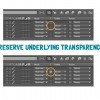As you develop your video strategy for 2016, you might be considering the pros and cons of the types of animation available as part of a comprehensive marketing plan. Whether you choose 2D motion graphics, 3D animation, fast draw, kinetic type, interactive, stop motion or live action animation, your ability to connect to customers will be influenced by the style you choose. Here is a breakdown of the different animation types and how they can be most effective for your video strategy.
2D Animation
2D animation is the most basic form of animation on the market today. Used primarily to take complex information and break it down into an easier-to-understand format, 2D animation appears flat. The look is basic, and the focus is in the height, width, and movement of the illustrations used to create the video.
Using 2D animation makes a video that is easy to understand and intriguing to watch. This style is often used in explainer videos making the information much easier to digest. This is a great alternative to the 500 words of text that would be required to explain the same message. CollegeWeekLive used this style of animation in their video promoting the launch of High School Connect. Most people learn well with visual aid, making 2D animation a versatile option to explain almost any message you want to convey.
CollegeWeek Live High School Connect from Sparksight, Inc on Vimeo.
3D Animation
3D animation takes into consideration the height, width, and depth of the illustrations in order to make a more natural looking video. With the use of 3D animated video in video marketing, it becomes possible to create a variety of interesting and realistic content for potential customers. A 3D animated video can be used to create virtual tours of a property, bring a setting and characters to life, or explore the design of a product from multiple angles. This option gives a more in-depth spatial look at the content you are presenting to your audience. To promo their new peripheral computer accessories, Das Keyboard chose 3D animation to show all angles of their product, giving the customer a 360 degree view. Using 3D animation as part of your video strategy will allow you to create a realistic animated video that is memorable and and entertaining to your customers.
DasKeyboard – Division Zero from Sparksight, Inc on Vimeo.
Fast Draw Animation
The fast draw technique is a fun way to get a message across. Starting with a white background, text and images are drawn by hand to create a video message. The use of a white board and markers, paper and pen, or chalkboard and chalk are often used in this style to bring to life the information you want to communicate. This is an excellent tool for visual learners as the concepts are physically drawn out in front of the viewer. This technique is great for showing progression or processes. The concepts are broken down for the viewer to follow, rather than the viewer seeing only the final result. Fast draw is ideal for explaining complex concepts and lengthly information because of its ability to keep the viewer interested and entertained. For unique, easy to follow animation, the fast draw technique is a perfect way to get your message across to viewers quickly.
Sparkdraw – How To Do A Fast Draw from Sparksight, Inc on Vimeo.
Kinetic Typography Animation
Through the use of moving text, your story is communicated word for word in kinetic typography. While pictures may also be used, it is the words that tell the whole story from start to finish. Kinetic typography grabs the viewer’s attention, and cements the idea into their mind by giving them an additional ways to process the information. The words themselves are animated, creating a focal point for viewers. In some videos, the viewer will be presented the information in up to 3 ways. They can see the message in images, read the message in text, and even hear the message in voice over.
Kinetic Typography is great for presenting statistics, facts, and abstract concepts that may not have a visual representation. The video below is a great example. Ixia explains the benefits of Heterogeneous Networks, a concept made much simpler with the use of this animation. This technique is used to help viewers better understand what you are communicating through easy-to-understand visuals and variety in how the information is presented.
Stop Motion Animation
In this technique, physical objects are moved and recorded one frame at a time, finally coming to life in the post-production process. To create this type of animation, the producer will stop the motion of the video frequently, moving objects a fraction of an inch. When played in its entirety, the objects appear as if they are moving on their own.
This type of animation has been used for decades. In St. David’s Health Care’s FIGHT video, stop motion animation is used as a lighthearted way to convey an important message. The visual is helpful to keep the viewer’s attention and makes it enjoyable to watch. You can tell any story using stop motion, but because of the precise detail involved, the process takes a significant amount of time to complete.
FIGHT (LEGO VERSION) – SDHC from Sparksight, Inc on Vimeo.
Interactive Video Animation
An interactive video is similar to a choose-your-own-adventure scenario. Viewers interact by responding to questions that affect what they see next as the animation proceeds. When used in your marketing strategy, interactive video allows potential customers to interact with your brand and to make choices that provide you with information about their interests. It’s easy to gather all kinds of information using interactive videos, as long as you are asking the right questions.
This type of animation is a great way to show viewers an inside look at your company by having viewers click through different workplace scenarios to highlight company culture and different positions. The video below gives you a taste of what it’s like to be an intern at Sparksight.
A more common use of interactive video, though, is to advertise your product or service and have customers provide their feedback by choosing what they would like to see next. For example, to gain more insight, a restaurant considering new menu options might open their video with information about their current menu. At the conclusion of the video, the viewer is offered a choice between potential new menu items. The animation the viewer sees following their choices could be more information about the dishes they selected. This method informs the viewer of what the restaurant already offers and gives them the opportunity to impact what menu choices they might have in the future. Interactive video is a unique way to get viewers involved and excited about your company.
Live Action + Animation
In this type of video, the use of real people is incorporated with any of the other above types of animation. This makes the video more interesting to viewers, as many will lose interest with a simple live action video about a product, company, or service. This is a combination-type of video, using any number of marketing strategies all in one production.
For example, Leading Reach uses this video to promote its social services. There is live action footage of people interacting and using their services, and the animation incorporated shows what the online and social platforms and services look like. This combination gives the video a much more dynamic feel and keeps the viewer interested.
Leading Reach Social from Sparksight, Inc on Vimeo.
Interested in commissioning an awesome new animated video? Check out our new Sparklers Campaign for a great deal on your next animation. Be sure to act fast, this deal ends August 15th!





